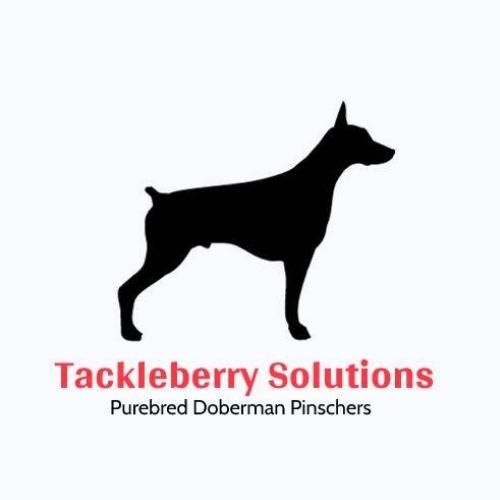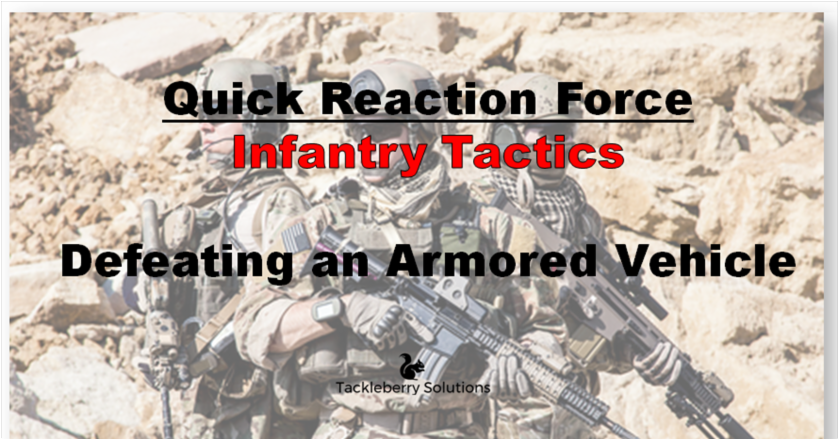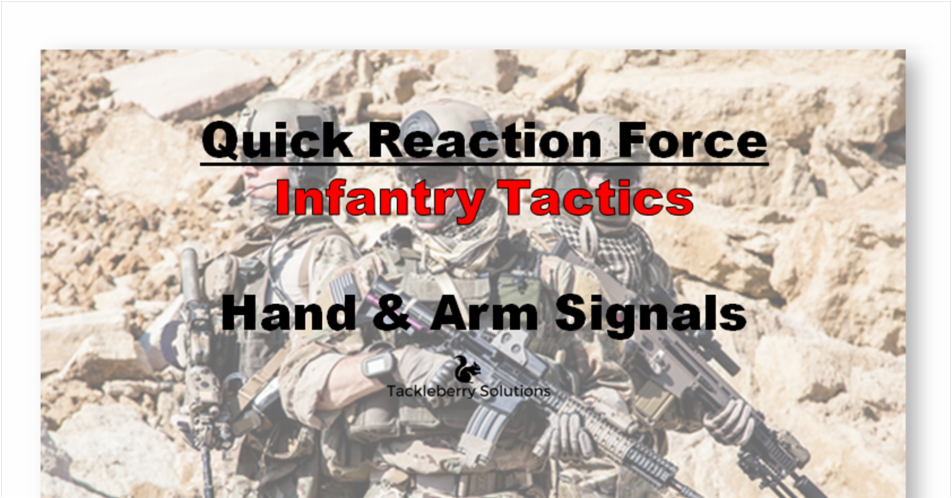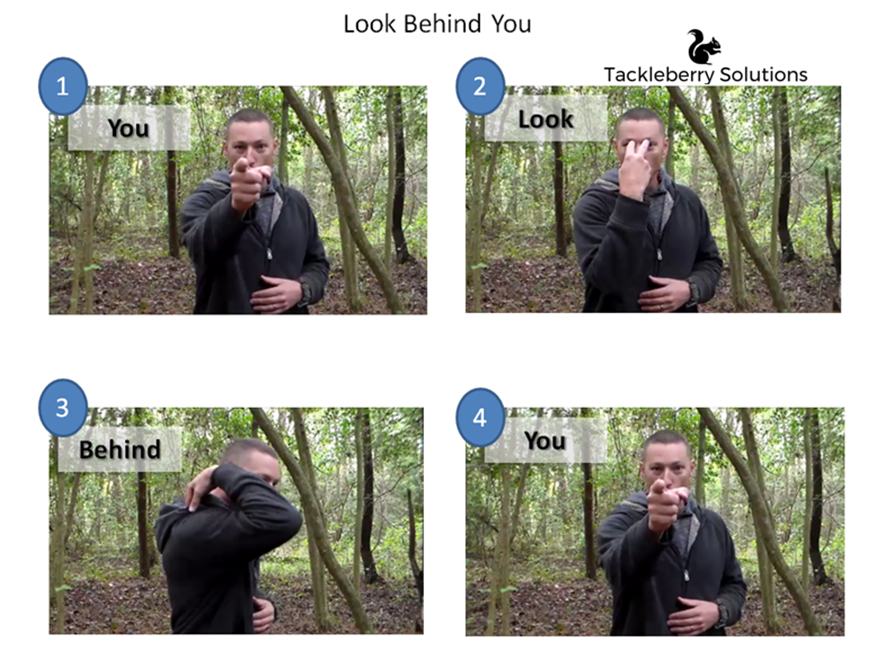Reaction to Contact - QRF Infantry Tactics
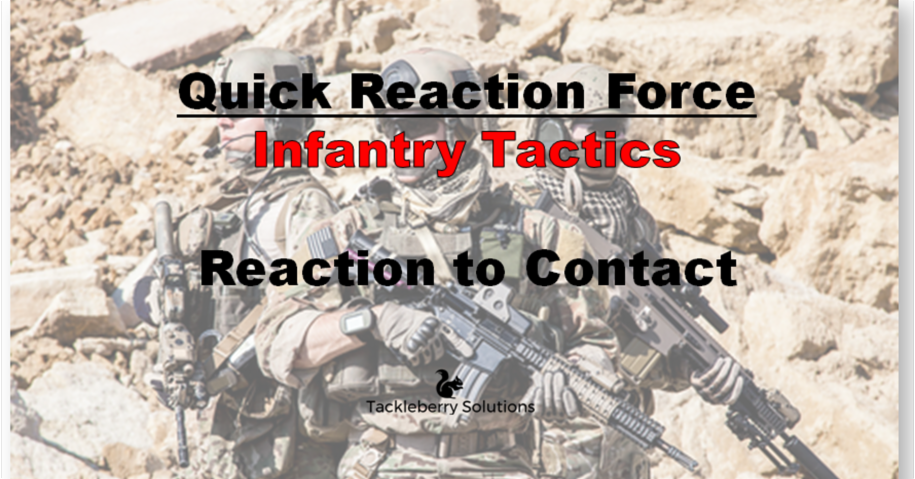
Reaction to contact (responding to enemy fire) in a near ambush and far ambush. These formations will help you keep your men alive.
This article is part of a series we are using to teach QRF Infantry Tactics. Here is an outline of the free lessons. They are numbered in the order they are taught in the printed book.
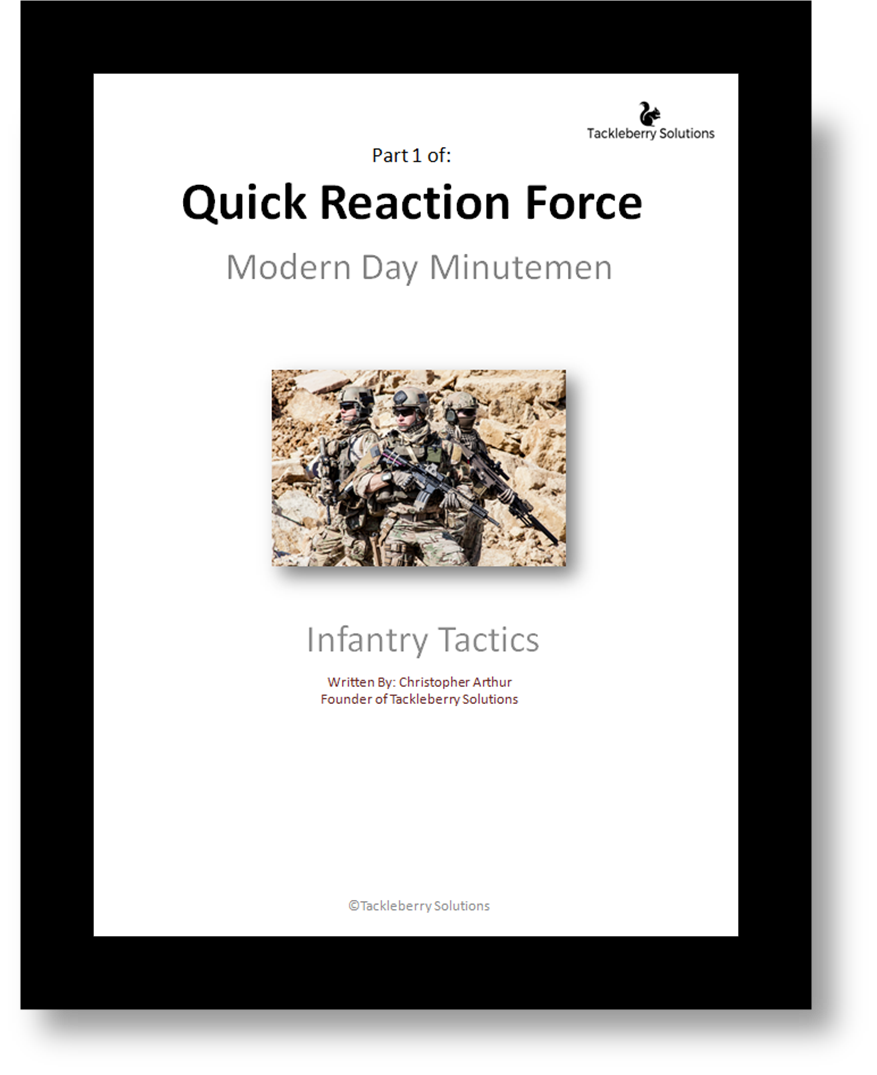
- How to Form Your Own Platoon
- How to Travel During Wartime Without Getting Ambushed
- Hand & Arm Signals - Communicate Silently
- Prisoners of War
- How to Remove the Injured From Battle
- Reaction to Contact (How to Respond if You Get Attacked)
- How to Stop an Armored Vehicle
- Convoys and Obstacles
- How to Identify, Locate and Avoid Landmines
- Fighting Back: How to Ambush Your Enemy
- Fighting Back: Tactical Formations
- Breaking Contact (How to Retreat)
- How to Conduct TCPs (Traffic Control Points)
- A Letter to the Commander (How to Keep Your Men Alive)
- A Story of Battle (What a Real Ambush Looks Like and How I Lived Through It)
Introduction - Reaction to Contact
*Important Note* This is lesson 6 of our QRF Infantry Tactics series. Click here to read the article on lesson 1.
Below you will see a summery of the article, "Reaction to Contact" Each section is linked so that you can go straight to the topic you're interested in learning about. Use the "Back to Top" button on the bottom right to navigate back up to the article summery if you want to view a different topic. Or you can simply scroll up or down if you want to take the time to do so.
If you have any questions at all about the tactics or methods mentioned in this article, you can ask by either leaving a comment at the bottom of the article, sending us an email to prepare@tackleberrysolutions.com or you can even call Arthur directly at 919 - 223 - 7741.
Article Summery - Reaction to Contact
How to respond to enemy fire (reaction to contact.)
Video, Locating Enemy Snipers using Sound - Reaction to Contact
Types of Ambushes - Reaction to Contact
The Near Ambush
If you are close enough to your enemy that they can throw a hand grenade and hit you…then you’re in a near ambush. If they are using a claymore, you’re in a near ambush.
Reaction to Contact: Run into enemy lines and engage them in close quarter combat. If you stay stagnant, you will die.
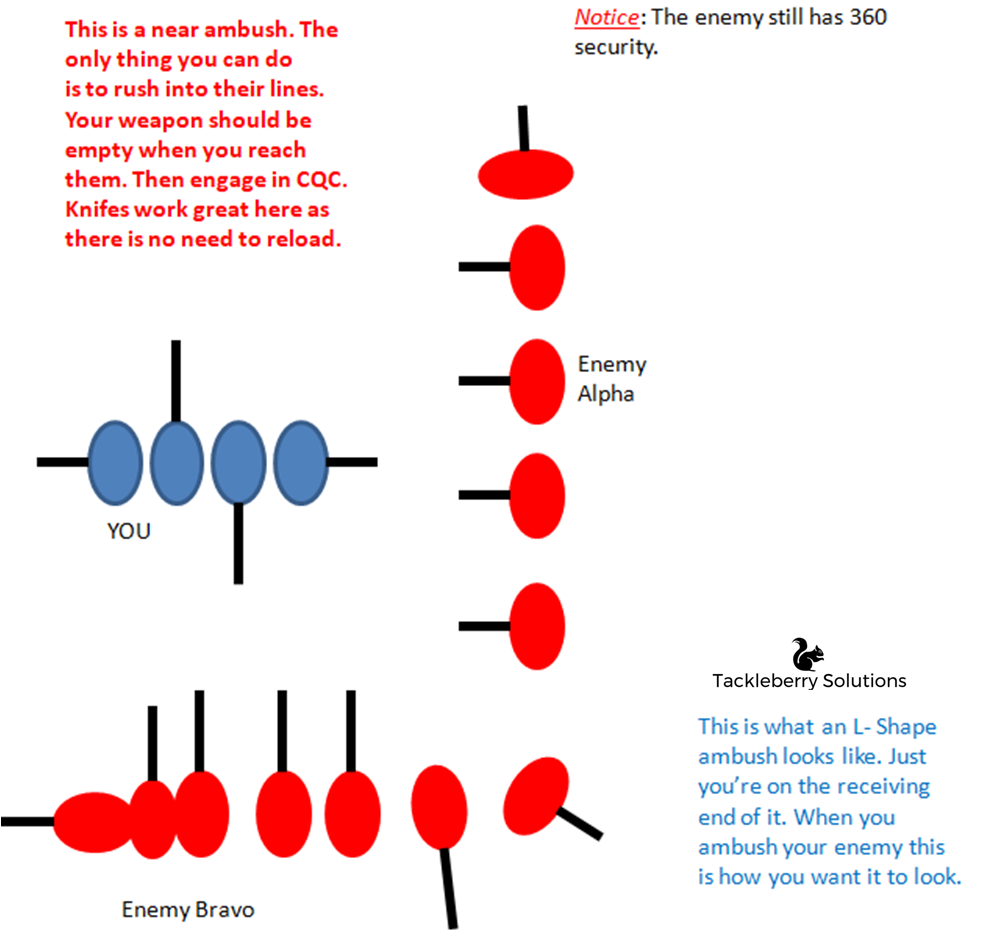
The Far Ambush
Outside of hand grenade range. If you’re going to be ambushed, pray it’s this one.
Reaction to Contact: Bring everyone online and establish base line of fire. Alpha section will hold base line of fire while Bravo section flanks onto enemy position from high/concealed ground and eliminate enemy personnel.
While this dance is a little more complicated, this really is the best ambush to be in. When you find yourself in a Far Ambush, you need to first establish a baseline of fire.
Every gun comes online. Alpha will continue to lay down suppressive fire while Bravo falls back (as if they were running scared) and flanks from a position of dominance. (You want the enemy to think that half your group are cowards and are retreating.) This is a direction that will give your Bravo section the high ground, cover their movement, or in any other way give them an edge.
Countering the Far Ambush - Reaction to Contact
Once the L shape is formed, Bravo calls out to Alpha to lift and shift their fire away from their direction of advancement. Alpha will start to shoot high and away from the direction that Bravo is coming in from. This keeps the enemy's head down.
As soon as the Bravo team is spotted and begins to engage the enemy, Alpha will stop shooting so as not to hit their own guys.
After Bravo sweeps across the enemy’s position like a wave O’ death, they will yell, "LOA! (Limit Of Advance)" and stop. Often taking a knee and gaining their part of the 360 security.
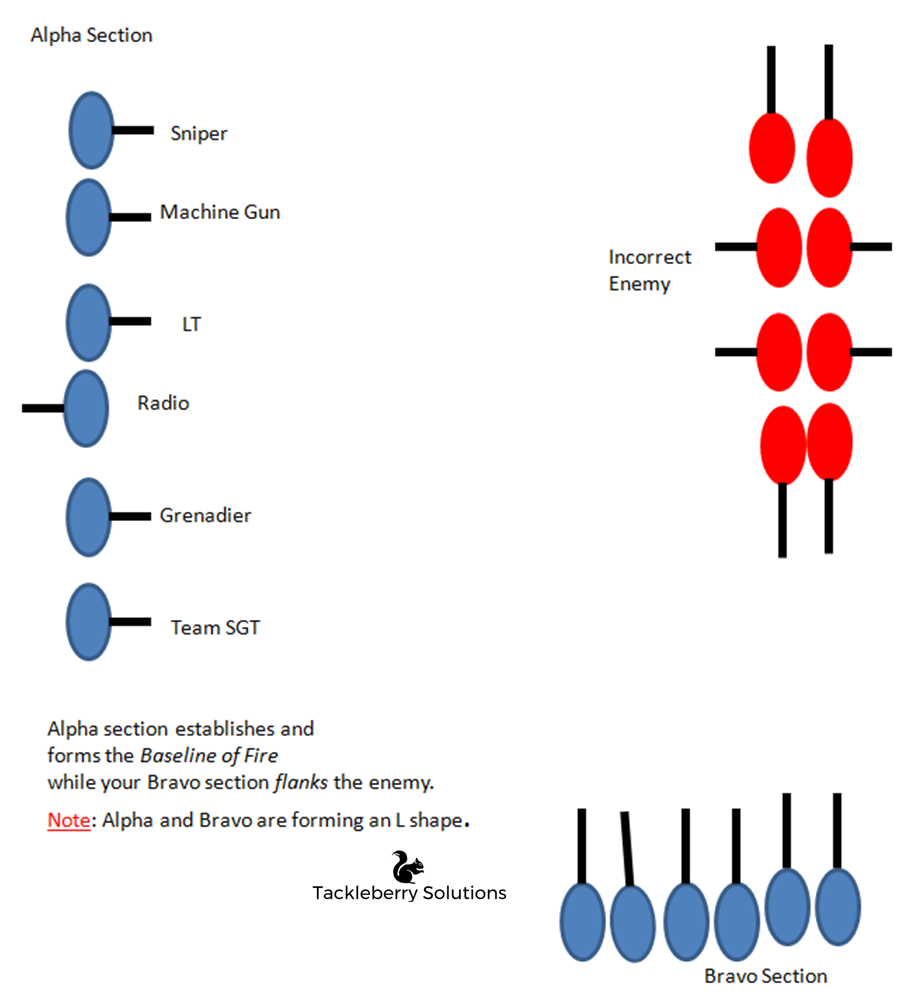
Alpha will then attack and shoot the enemy again. This is to make sure that no one is playing possum. After they push through the enemy position, they also will yell, "LOA!" And then form the final part of their 360 security.
At this point, the medics check for wounded; leaders search for enemy Intel, report to higher, get their wits and form any new plans needed. Meanwhile others will cross-load ammo and check on their buddies.
Far Ambush - End Result
The end result of your reaction to contact should look like this when you're all done.
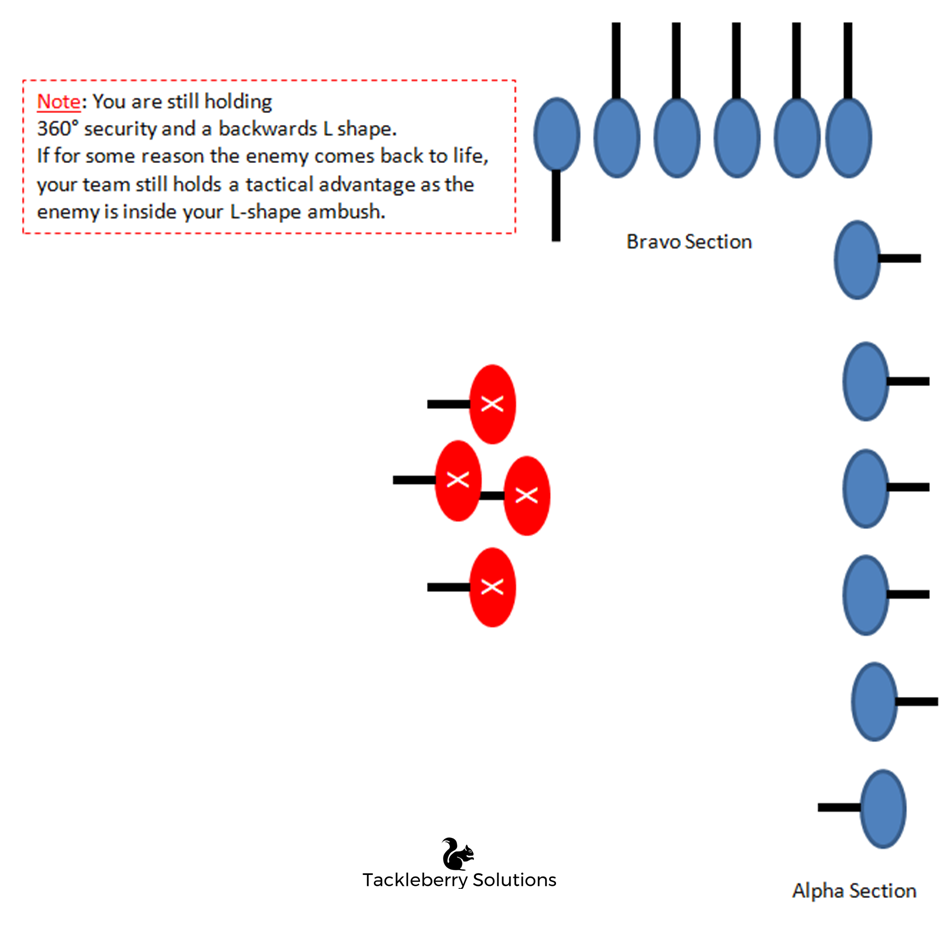
Reaction to Contact Notes:
The Aftermath - Reaction to Contact
No matter the form of contact, you should always kill the enemy first. Then have the medics check for wounded. The leaders will search for enemy Intel, report to their uppers, get their wits and form any new plans needed.
Meanwhile, others will cross-load ammo and check on their teammates. Then figure out if you can still carry out your mission or if you should just turn around and head home.
Warning: If you try and treat the wounded while getting shot at, you will only give the enemy a stationary none aggressive target to shoot at. In other words, you will die too.
Don't Stop
After you have gathered all the Intel and other stuff (like ammo, grenades, cigars, etc) off of the enemy, move out. You just made a whole bunch of noise defending yourself and everyone knows you're there. So get moving!
Fall back to your last rally point or to your nearest CCP if you have wounded. Otherwise, continue the mission or head back to home slate. Also, you might want the Bravo section to take the lead and let their sniper carry you the rest of the way in. If your Alpha section sniper just walked you into an ambush, he needs a break (to say the least).
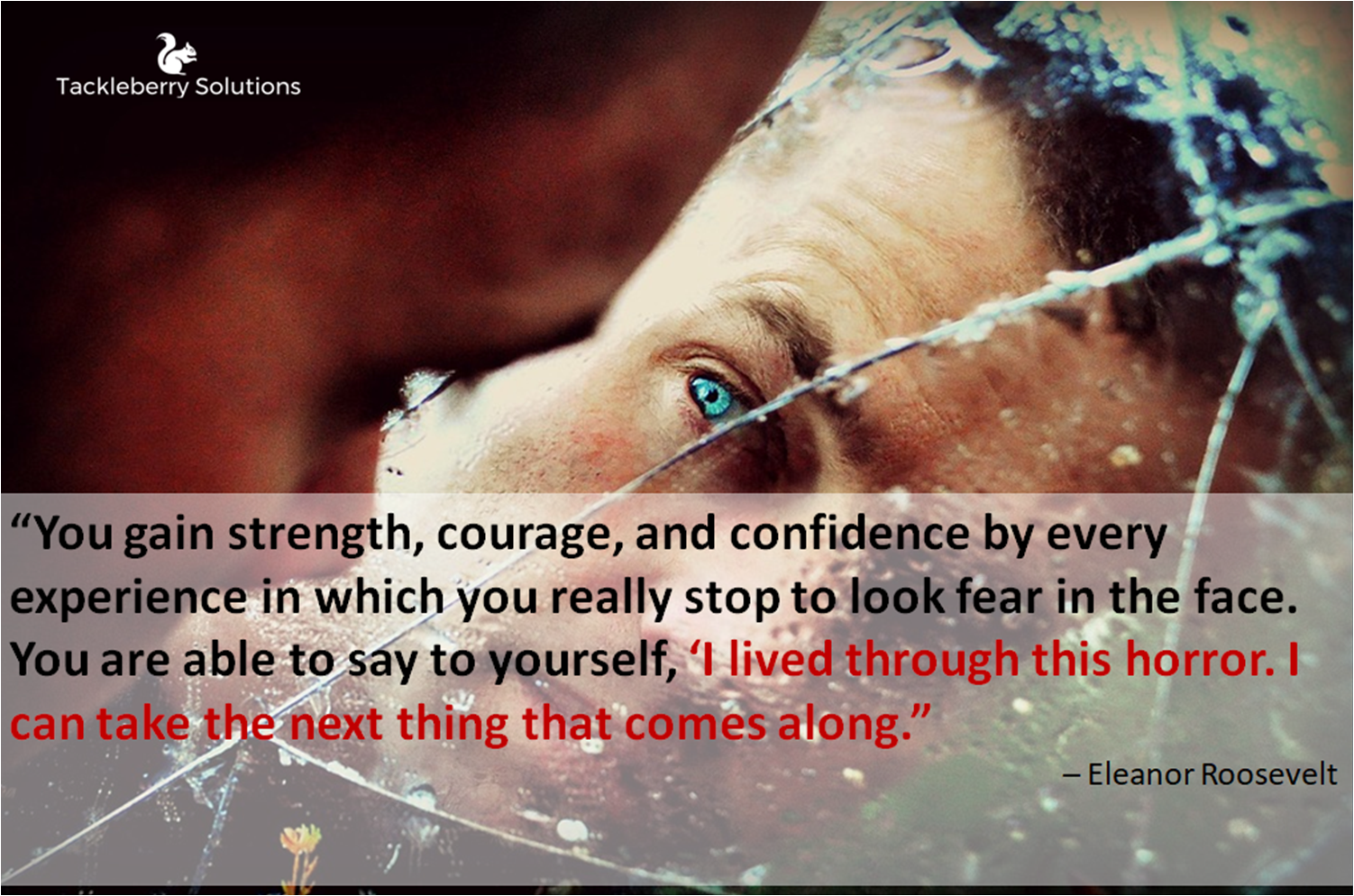
Important Side Notes:
Keep Moving
You need to push through. Standing still won't get you anywhere. Any action, even if it isn't the best one, is better than no action at all.

“When a man is lying in a shell hole, if he just stays there all day, a German will get to him eventually. The hell with that idea. The hell with taking it. My men don't dig foxholes. I don't want them to. Foxholes only slow up an offensive. Keep moving. And don't give the enemy time to dig one either. We'll win this war, but we'll win it only by fighting and by showing the Germans that we've got more guts than they have, or ever will have. We're not going to just shoot the sons-of-bitches, we're going to rip out their living @#$%! guts and use them to grease the treads of our tanks. We're going to murder those lousy Hun cocksuckers by the bushel-@#$%-basket. War is a bloody, killing business. You've got to spill their blood, or they will spill yours. Rip them up the belly. Shoot them in the guts. When shells are hitting all around you and you wipe the dirt off your face and realize that instead of dirt it's the blood and guts of what once was your best friend beside you, you'll know what to do!”
General Patton
Patton's point was that you must continue to push and drive the enemy back. You must overwhelm them with fire superiority or you will die. They have to wish they had never attempted to ambush you, period.
Indirect Fire - Reaction to Contact
Indirect Fire- any ordinance or projectile fired from a weapon system with a means of aiming. Most mortars and artillery fire is done by guess work and experienced spotters (i.e. Recon). Mortar rounds, SAMS rockets, artillery rounds, and most aircraft bombings are considered indirect fire. However, most newer forms of air strikes are surgical and are considered direct fire.
Reaction to Contact:
You must first take cover while alerting everyone by yelling “Incoming”. After the explosion you need to move. It is only a matter of seconds before they dial in on your position. Indirect fire guns can move vertical and horizontal easily. But not diagonal. Thus you must run at an angle to the nearest concealment. In other words if you’re facing north, then run northwest. Give your guys a distance also. “ 11 O’clock, 300 meters.” Just get out of sight.
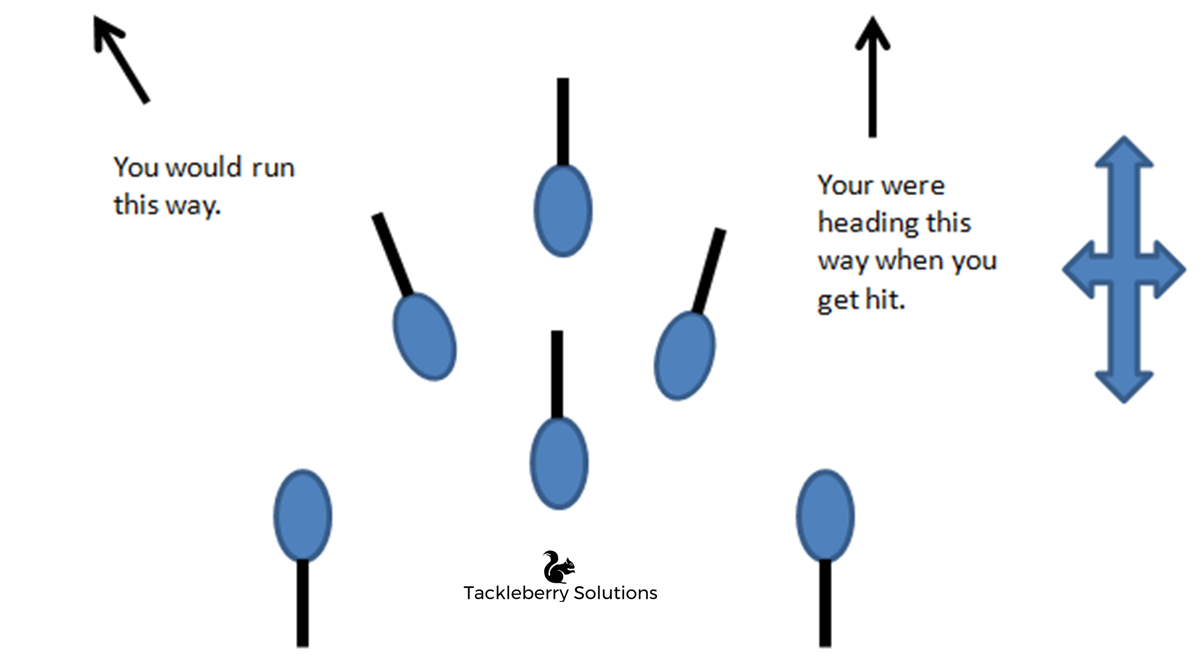
Warning: Remember that a building isn’t Mortar proof. So running into the thick brush or high weeds is better than running into a building, stationary vehicles, or any easily identified land feature.
I promise you that whoever is spotting for those guns, has already established that building, etc. as a pre-designated firing point. This is done so that the guns can be walked onto the target quicker. The spotter only tells the shooter, “Hey, go to target #3 and go 3 clicks down and 4 clicks right... Fire!”
So what you should sound like from start to finish is this. “Incoming!” Boom! “&*%$... 11 O’ clock 300 meters!” The platoon repeats what you said. “GO!” You all get up and run like hell. Then while running, tell your men to “Get into those *&%$ing woods!”
Got it? Clear as muddy water right? If you’re feeling overwhelmed now, just wait. It gets better.
Snipers - Reaction to Contact
When you’re looking for snipers, you need to put yourself in the position of the shooter. If you were a sniper, where would your hide be? What position will give you the best advantage of Over-Watch?
In most urban environments, the sniper will take up position from a tall structure, often on roof tops or in 2-4 story rooms, or in vehicles. Trained snipers shoot from back in the room. And will either not adjust the window or only remove a single pane.
Using Light as Your Ally
In most rural environments, the sniper will take up position in an area that will give them the most cover/concealment. This means that the very woods that you are heading towards, might be where the enemy sniper is located. This is why its important to be observant. Also just sit, listen, and observe before stepping out into the open. Most snipers give themselves away by either the Black Triangle of Death (will touch on this again in just a minute) or movement.
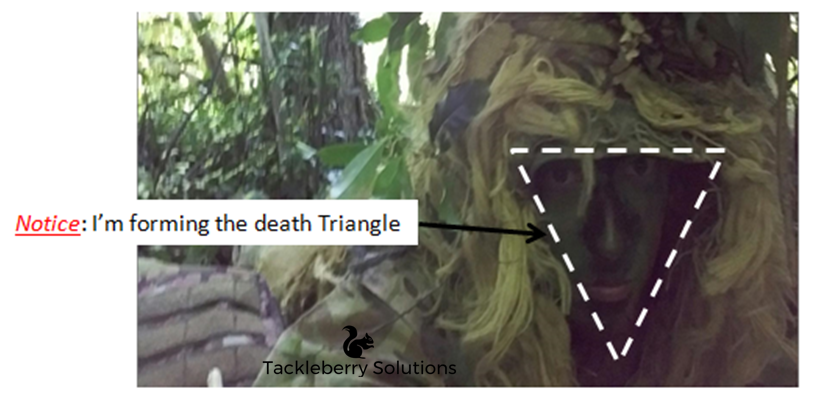
Be Observant
It also helps to think about their optics. Light can be a major inhibitor when it comes to those types of sights. You can also use the sunlight to look for the reflection of their scope.
Spend time sitting and observing the immediate surroundings. This way you can pick out something that doesn’t belong. Especially if you frequent this route. For example:
- The upstairs window of the that house that is now open for the first time ever.
- That really dark spot in the edge of the woods.
- The mini van that doesn’t belong there with the sliding door only cracked open.
The Black Triangle of Death - Reaction to Contact
Most untrained snipers (Snipers that didn’t spend time learning about camouflage or how to use natural vegetation with their nets /gillies or about sniper veils) will form a very dark spot called The Black Triangle of Death. Their head and their elbows will form an upside down black triangle in the shadows.
If you are being targeting by a sniper, you want to look for that black shadow that forms a triangle. Aim for the top of the upside down triangle and fire.
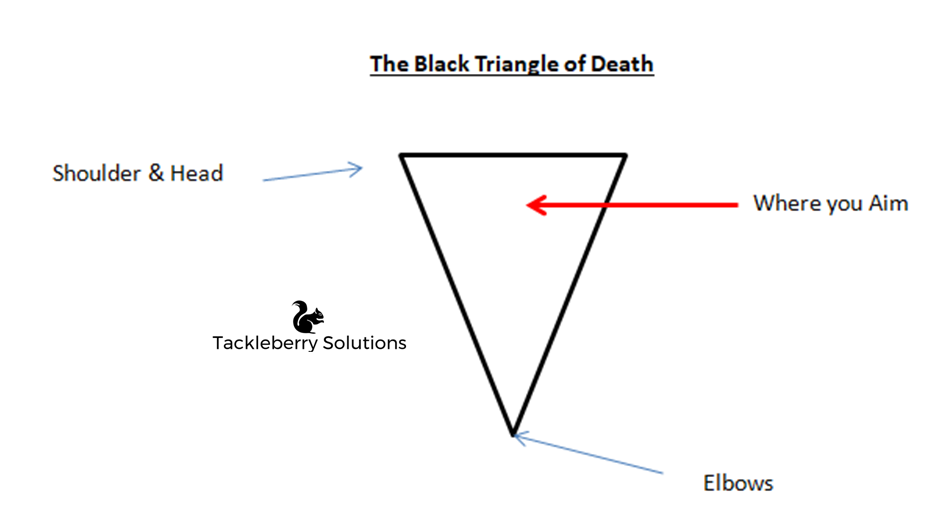
Speed of Sound - Reaction to Contact
Speed of Sound- Sound travels at 330 meters per sec. This means that if you hear the bullet pass you, and 1 second later you hear the gun shot, the person shooting at you is 330 meters away.
This can give you an idea of how far the shooter is, what weapon system you will need to shoot back with, and approx. where the shooter is located.
Keep in mind if the shooter is using a suppressor, then you may not hear the gun shot. If you do, then the sound was heavily displaced. Thus you can’t rely on your hearing alone to locate the shooter hide.
Type of Ambush
Most attacks from a sniper are considered a far ambush. Thus it must be treated accordingly. The issue comes when you can't find him. Sometimes it’s just better to break contact and move on, or call in an air strike.
In the diagram below, there are only 2 of you. Breaking contact is your best option. Lay down suppressive fire on the building while bounding forward to the wood line. After you’re in the woods, you can call in a strike on the building or formulate anther plan to deal with the sniper.
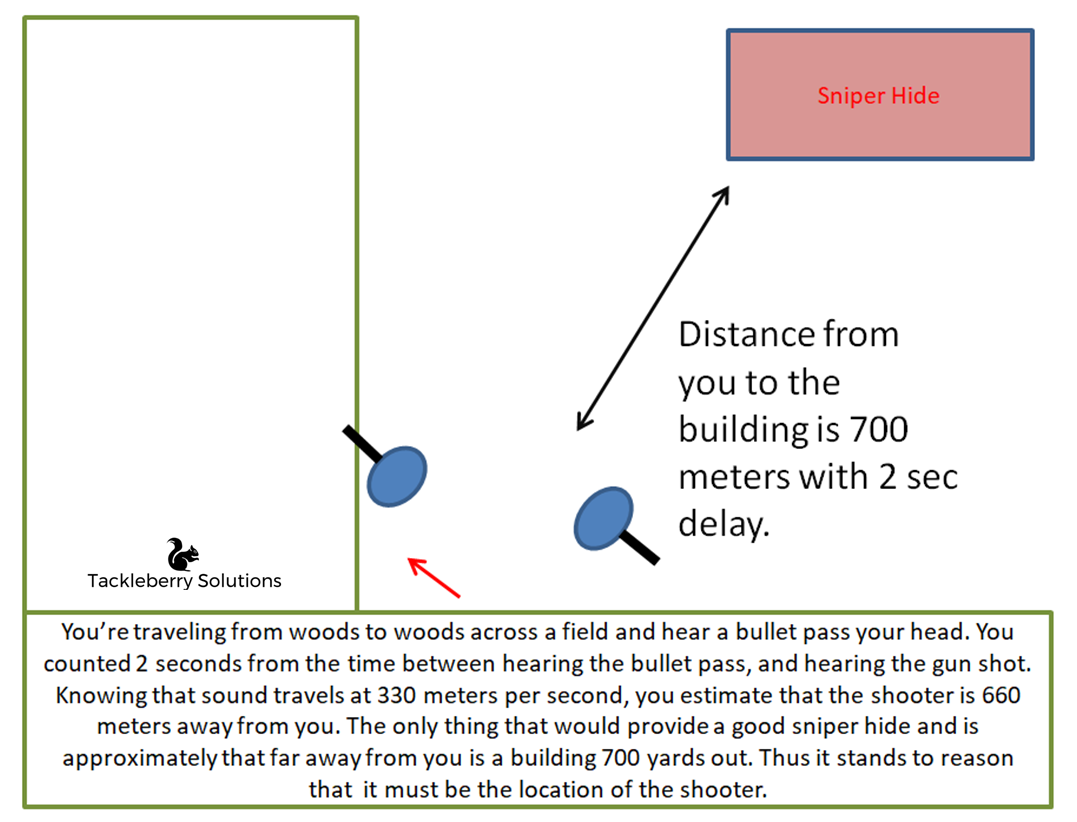
Key Notes on Snipers
While this tactic works great against fixed enemy positions, it will only work for about 2 or 3 bounds. Be sure you move from one covered/concealment location to another. And be sure that your buddy is laying down suppressive fire on the enemy position. Otherwise you will be standing up to your death. This will work if you’re trying to break contact with a sniper. It along with the zigzag and suppressive fire will make it hard for the sniper to find you in the scope.
Air Strikes - Reaction to Contact
What do you do when you get hit at from the air?
Aircraft
While all air crafts have thermal sighting imagery, not all have FLIR. Most air strikes can be heard coming. The question is, can you run and hide fast enough?
Digging in will help you survive air strikes. Put enough dirt over your head, and even FLIR can’t see you. Something else to remember, predator drones go silent just before the attack and have pin point precision accuracy. They also use a FLIR sighting optics.
Think Ahead
The only way to survive that is not to be visible to the FLIR in the first place. Furthermore, bunker buster missiles do exist. If they see you on FLIR and you disappear, they will aim for where you disappeared at and drop one. Honestly, the best thing you can do for this is act like an animal. Don’t put all your guys in one place and try and stay under cover. Military ponchos 2 to 3 feet off your head will also throw off a FLIR.
Flare/Spot lights
Primarily out dated and replaced by night vision and thermal optics, flares and spot lights are still used by guards at poorly funded locations. The idea is if the guard hears or thinks they see something, they fire off a flare or use a spotlight to show the enemy’s location so everyone can shoot the intruder. Both are easily defeated by laying perfectly still with your face in the dirt. Remember that your eyes reflect light just like a deer in the headlights, and that movement attracts the human eye. After the light is gone, continue your advance.
Hand Grenade
There are about 3 different ways to handle a hand grenade. None that I really am in love with.
1. Attempt to grab the grenade and throw it back towards the enemy before it detonates. If you’re on a smooth surface (think inside a house or on concrete) attempt to kick it back towards the enemy.
2. Act O’ Valor your way out and jump on the grenade saving your teammates. (Personally I think you should grab that asshole dirt bag everyone hates in the group and throw his ass on it. But I doubt there will be enough time.)
3. Get the hell away from it. If you’re in a building, immediately push forward. You might just stand a chance by rushing forward into the next room while laying down suppressive fire. If you’re in the open, just run about 3 steps and dive for the ground. Be sure your head is the farthest thing from it. If you’re laying down or kneeling, then just jump as far away from it as you can. Remember that is only has a 5 meter kill radius.
Out of these 3 options I prefer #3.
Gas
Obviously if you have a gas mask you put it on. You have 7 seconds to do so. Then you must block the exit values and blow hard to push the gas out of the mask. Then block the intake on the bottom of the air filter canister and breath in to insure it has sealed properly.
There’s only one issue with this, they don’t make gas masks for toddlers and babies. So I’ve reached way back to bring you another solution. I was taught this way back in basic from a desert storm veteran.
Without a Gas Mask
Hot air rises, so dig a hole. Basically, the hot air will rise and dissolve into the atmosphere. All you need to do is stay low and breath even lower until it dissolves. Kind of like being in a burning house, just you’re digging holes. The amount of time it may take for the air to clear depends on the area. In a house, days. In the open, minutes. I have used this and it does work.
We were hit with CS gas while in training, I dug a hole, took a deep breath, and made a run for it. Got out of the immediate area and took a breath. I was perfectly fine.
Up Next - How to Stop an Armored Vehicle
Now that you've learned about reaction to contact - it is time to learn how to stop an armored vehicle. Click here to read the next article.
Definitions/Terms
2-3 Second Rushing- “I’m up, he sees me, I’m down.” That what you say to your self as you run from one cover/concealment location to another. This is done so you can advance or retreat without getting shot. By the time the enemy gets his sights on you, you’re hitting the ground. Then your buddy jumps up and runs.
360 Security- Always maintain the ability to fire and scan in every direction. The fewer men you have, the more vigilant they must be in monitoring their sector of fire.
AUW – Advanced Urban Warfare are advanced tactics for fighting within an urban environment.
Baseline of Fire- a position usually formed by the Alpha team. All members come and form a line facing the enemy. Remember to keep 360 security. Then they use suppressive fire to keep the enemy heads down and attention on.
Bound and overwatch- One soldier shoots with suppressive fire while the other advances onto the enemy’s position, or retreats from their position. Often using 2-3 second rushing.
Breaking contact- basically you realize that you have bit off more than you can chew and wanta get the hell out of there alive. There are formations and tactics to do this properly. Bound and overwatch, Auzzy Peel, and Rolling Peel.
Casualty Collection Point- Predesignated location just outside the contact area of a raid sight, or locations along the route of travel, in which you will collect your wounded for treatment and stabilization for movement to a medical facility. Can also double as rally point.
CCT- Casualty Collection Team. A small team that usually consist of 3-4 guys that collect the dead or wounded during the fight. This is seen more often in AUW (Advanced Urban Warfare).
Choke Point – This is much like a fatal funnel, it is an area that you have no choice but to go through due to the natural terrain features. Example: a bridge over a large river.
Commo - communications
Concealment- A position behind an object that cannot stop bullets or fragmentation, but can act as a visual block. (i.e. tall grass)
Convoy - A group of vehicles traveling in the same direction for the same purpose.
Cover- A position behind an object that can stop bullets, fragmentation, and visual contact. (i.e. Rock)
cross-load ammo – This is like socialism, but with ammo. You will compile all of your ammunition and distribute it equally. This is typically done after a firefight.
Direct Fire- Precision incoming fire. Think J-Dam off a F-15 or rifle fire.
Dismounts – Men that get out of the vehicle and push forward on foot to either engage the enemy or clear an obstacle.
EPT- Enemy Prisoner Team. Similar to the CCT, but not as caring. They secure and search the POW again and move them (wounded or not) to the POW security point for yet another search, treatment, and evacuation for further interrogation. CCT can double as EPT.
Far Ambush- an attack that is outside of hand grenade range.
Fatal Funnel – This is like a choke point. It is an area that gives you no choice but to go through in which you have no option to go left or right. The only way out would be to push forward or go backwards.
Flanking- Moving toward the blind side of the enemy to gain tactical advantage.
FLIR Imagery – This is an advanced thermal optic used by drones and other aircrafts to spot personnel, weapon cashes or anything else that gives off a heat signature. This is very difficult to avoid.
Force on Force Training - Split your platoon in half and have one side defend, while the other side attacks. Be sure to use actual projectiles such as air soft, paint ball, or SIM rounds.
Formation- A specific placement of men to gain maximum tactical advantage.
Forward Operation Base (FOB) – Is a city within a city. Much like a standard military base here in America. Just this base is totally geared for war. Round the clock guards, stationary and roaming, TCP, etc.
Grenadier - Is the guy that carries the grenade launcher and grenades. Second most important weapon system in a fight. Can cause mass casualties with only one shot.
Indirect Fire- incoming fire that is from an arial weapon. Think artillery, mortars, or grenade launcher.
Intervals – distance between each person
KIA- killed in action.
KISS – Keep it simple stupid
Lift and Shift- A command given by team leader to fire high and away from your approaching troops. This keeps enemy’s heads down without hitting friendly forces.
Limit Of Advance – When advancing through an objective, this is an area where you stop your assault.
L-Shape- L shape ambush is when you literally place your men in a form of an L and let the enemy walk into your cross fire. With this shape, there is no way you can hit each other. But your enemy has nowhere to go and is getting hit from what seems like all sides.
LT – Lieutenant, the lowest rank that a commissioned officer can hold in the military. In my experience they are usually “GOOD IDEA” fairies and cost you more sleepless night and pain than any one else.
LOA- Limit of Advance. Tells the men in your section to stop movement, and commander of other section to start their assault.
LZ – Landing Zone for an aircraft.
Murphy’s Law – An old army wise tale. Anything that can go wrong will go wrong, it’s Murphy’s law.
NCO – Non-commissioned officer, where the rubber meets the road, the backbone of the military. The guy that puts foot to ass, trains the men, keeps them alive in a hot zone, and makes heroes out of LT’s.
Near Ambush- An attack that is within hand grenade range. I.E. I can throw a hand grenade and it kill the enemy.
Neighborhood Guardian – Is like the stationary or roaming guard. The watchdog of your community.
Package - A term used for the person/thing that is being protected or delivered.
Pat Tillman – Former NFL player that joined the Army Rangers after 9/11. Was killed in action during a firefight in Afghanistan. Stood up from behind cover in front of his team and was hit by friendly fire.
Platoon – Is a group of men that comprise of two sections of about 6 soldiers. They are headed by the platoon Sergeant and Lieutenant.
Platoon Leader Recon- when the LT, Senior, and a radio guy move forward to observe the objective while leaving the main body behind . This is done to prevent too much noise from excessive movement.
Point Man – The man that is at the front of your formation, this is typically a sniper.
POW- prisoner of war.
Prone - The most stable firing position and the safest during a firefight. Just lay down.
precision fire – Shooting carefully to aim and actually hit the target instead of just spraying lead.
QRF (Quick Reaction Force) – Modern day minutemen. You can also think of them as emergency responders during war.
Rally Points - Predesignated location for your men to fall back to. This would be used as a gathering point after a raid, breaking contact, or that one member that gets separated from the group. Can also be used as check points along the route of travel to ensure you are on course.
Ranger File – Think ducks in a row. Walking in a single file line. This is used in areas with thick under brush.
Reaction to contact – Reacting to enemy shooting at you. Depending on the situation, you will react a certain way.
RPK – Russian version of a squad automatic weapon, typically carried by their machine gunners.
Sector of Fire- The area in which you are responsible for and have free range of engagement.
Sig acts – Significant activities within the last 24 hours. Firefights, enemy activity, etc.
SLLS - Pronounced Seals, stands for Stop, Look, Listen, Smell. Basically just be observant, you might just find something.
Sniper- an enemy sharp shooter that uses concealment to hide their position while delivering procession fire on enemy.
Stationary Guards – Guards that sit in one location observing their sector of fire.
Stockholm's Syndrome- A state of mind prisoners can develop in which they sympathize with their kidnapper and no longer try to escape.
Suppressive Fire- one round a sec. This is designed to keep the enemy’s head down while your other section advances onto their position.
S vest - Suicide vest. A vest that is rigged with explosives, designed to be worn by individuals willing to blow themselves and others up .
TC - Truck or Track Commander
Thermal Sighting Imagery – Optic system used to see day or night based upon your body’s heat. Does not work through glass or any kind of obstruction. Also faulty in the desert at high noon as everything is hot.
Triage – This is where you assess the wounded in mass amounts so that you know who to treat first that have a better chance of living.
Train to Failure – Train as if everything is failing you. Radios die, weapons jam, no support, medic is dead, etc.
Victim Detonated – Basically a booby trap that is detonated by the victim themselves be it via trip wire, thermal imagery, pressure plate, etc.
VIP - Very Important Person
Wedge Formation - Formation used when in the open. Designed to look like a wedge. Gives you more of a chance of surviving a sniper ambush.
Side note: When you get into contact with the enemy just yell out your commands. The enemy knows you’re there anyways. Be sure that the command is repeated back to you by the rest of the group. This is to ensure they understood the order and to give anyone that didn’t hear it a second chance at hearing the order. Furthermore, dig deep, grab your balls and sound off. Use your man voice. When all hell is breaking out around you and guys are dying, no one is going to hear or listen to you if you sound like freaking Mickey Mouse.
